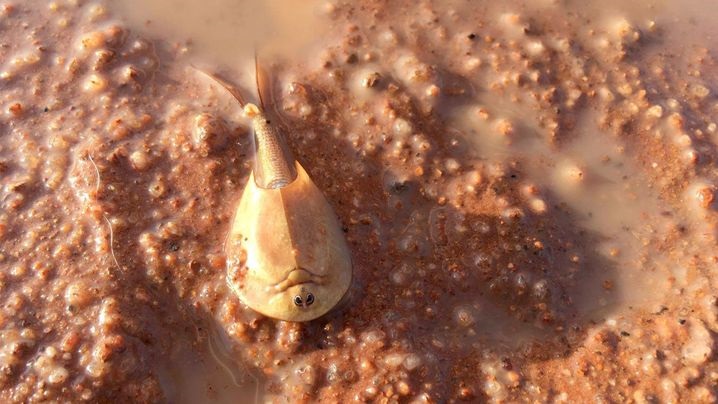Torrential downpour resurrects alien-like prehistoric shrimp in Australian outback

Millions of crustaceans have been rehydrated by rain in Australia in normally arid desert areas, where precipitation only comes once every half a century.
Floods in December 2016 were so severe that Uluru (also known as Ayers Rock), near Alice Springs, was shut to the public as extensive areas of the outback were submerged.
This extreme wet weather has also brought an unusual creature – the shield shrimp (Triops australiensis) – back to life.
This crustacean is one of the hardiest animals in existence. It travels around by being blown across arid landscapes and is buried under desert sands. Its eggs are highly resistant to extreme temperatures and can survive for more than 10 years without water.
Michael Barritt, an expert on these 'living fossils' – animals which remain virtually unchanged since prehistoric times – told the Australian Broadcasting Corporation: "These are eggs that can dry out and deal with all the kinds of extreme temperatures that inland Australia gets, including high temperatures and low temperatures at night in wintertime.
"All these eggs get blown all over the place. Then when sufficient summer rain comes along, they hatch and go crazy trying to feed as much as they can on micro-organisms and bacteria in the water. They want to be able to lay their eggs back into the drying surface before the waterhole dries out."
Once the rains come, millions of shrimp appear, some even in puddles of water at the top of Uluru which has an altitude of 2,800ft, according to a Times report. The prehistoric crustacean provides food for small birds, who are in turn prey for hawks and falcons.
"The shrimp are well adapted to desert conditions as their eggs will remain dormant for years until there is significant rain, which triggers a population explosion," NT Parks and Wildlife told 9news.com.au. "Now is the best time to see the shield shrimp as the recent heavy rain in the Central Australia region has brought them to life."
This is the only species of shield shrimp native to the Australian mainland. Its alien-like appearance is due to a third eye which appears above the crustacean's usual pair when it is born. It retains this "naupliar eye" when full grown.
Политика конфиденциальности | Правила пользования сайтом







